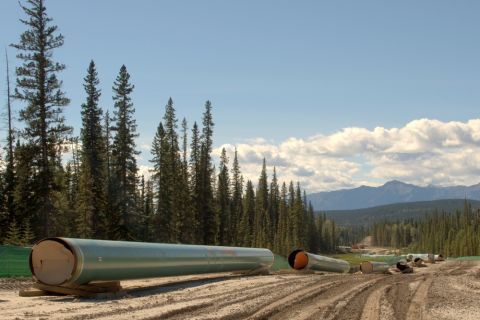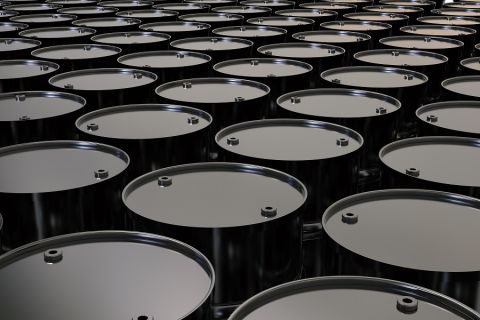Presented by:

The terrible events unfolding in Ukraine quickly shifted the narrative on global energy from “energy transition” to “energy security,” although we view the current period more as one of “energy scarcity.” A confluence of factors had the market headed toward energy scarcity in the developed world before the invasion of Ukraine (energy poverty exists in the developing world); plummeting costs for renewable energy sources and energy storage, government-led clean energy policy mandates and conscious consumers driving corporations to commit to net-zero policies had sent the world into a green frenzy with unrealistic near-and-medium term ambitions.

These themes, coupled with a misunderstanding by most of the population and many government leaders about the incredibly important and integrated role fossil fuels play in almost all aspects of the modern economy, from energy production to agriculture to pharmaceuticals, led to underinvestment unfolding at a dramatic level. At the same time, oil and gas companies were disincentivized to invest in fossil fuel production, especially oil and natural gas production. This underinvestment is manifesting in dramatically higher oil and gas prices. The recent period of relatively low fossil fuel prices is over, and a period of high energy costs will persist at least for the medium term.
We see an era of heavy investment in “all of the above,” from fossil fuels to renewables to carbon mitigation technologies unfolding. The world is short on hydrocarbons and electrons, and the energy and power companies are responding. This includes both oil and gas, new energy technologies and major growth in electrification, especially of mobility. The traditional energy industry is increasingly investing in clean energy technologies, which we see as natural. The clean energy companies tend to be small, while the oil and gas industry has scale, technology prowess and can innovate at scale. Embracing each other’s skill sets should lead to a flurry of joint ventures, technology partnerships and potentially M&A.
We believe the alignment of hydrocarbon businesses with renewables is in the early stages and will be a defining trend in the planet’s move toward a lower carbon future. We also applaud the oil and gas industry for its rapid embrace of carbon capture, utilization and storage outside of use for EOR, as this technical skill set and carbon capture itself is the main mitigation technology in the push to decarbonize the industry.
We entered 2022 with the view that E&P spending would grow in the mid-teens year-over-year. This is now likely closer to 20%. The spike in prices has led to three major shifts. First, private operators in North America have more cash flow to spend, and while these entities are bumping up against oil service capacity, they will increase spending by 50% to 70% compared to the previous 40%. Second, international oil companies, in particular those in the Middle East and North Africa, are also increasing budgets and adjusting their oil price forecasts to $60 to $80/bbl from the previous $45 to $60/bbl. Now these companies will boost E&P spending by 30% to 35% versus initial forecasts of 20%.
And lastly, offshore activity is being pulled forward in both the shallow and deep water. Large projects in the Golden Triangle, some recent exploration success in areas such as Namibia and a major ramp up in shallow-water drilling in the Middle East are all contributing to this expansion. The industry is responding to oil and gas price signals to increase production; however, following a period of significant underinvestment, the response will first focus on reversing production declines before it moves to a period of production growth, which will take years and set the industry up for a prolonged multiyear upcycle. This will rival and perhaps surpass the early 2000’s upturn.
In the U.S., E&P spending is expected to rise by at least 40%, driven by private operators. Yet production is unlikely to grow by more than 1 MMbbl/d, entry to exit. Shale is now a mature play, unbeknownst to many industry participants. Prime acreage has been drilled, and second tier acreage is now the focal point. The geology, which hadn’t been particularly exciting in the past 100 years until the advent of horizontal drilling and hydraulic fracturing activity, is not coming to the rescue.
The international markets will not fare much better in the near term. The false gold rush into shale stymied international and offshore activity, and many regions experienced periods of significant underinvestment. While we anticipate activity increases in the mid-to-high teens in almost every major oil market around the world (except Russia), the initial impact will be the reverse production declines or stagnation. The second rounds in 2023 to 2025 will be to modestly boost production, if possible.
While the geology and success will vary by region in general, we do not expect any significant growth through 2025 in any areas outside of Suriname, Guyana and Brazil and gas production in East Africa.
In short, a major cycle is now underway. The oil service industry is leaner and meaner this time and armed with better, more digital technology. A very large percentage of investors have yet to see a commodities cycle and true operating leverage—in metals, mining, materials and hydrocarbons. This will change world market thinking and positioning and usher in a new era of investing in oil, gas and renewables. This will likely be on a scale never witnessed before.
Recommended Reading
Imperial Expects TMX to Tighten Differentials, Raise Heavy Crude Prices
2024-02-06 - Imperial Oil expects the completion of the Trans Mountain Pipeline expansion to tighten WCS and WTI light and heavy oil differentials and boost its access to more lucrative markets in 2024.
US Oil Stockpiles Surge as Prices Dip, Production Remains Elevated
2024-02-14 - EIA reported crude oil stocks increased by 12.8 MMbbl as February began, far outstripping expectations.
Oil Dips as Demand Outlook Remains Uncertain
2024-02-20 - Oil prices fell on Feb. 20 with an uncertain outlook for global demand knocking value off crude futures contracts.
US Leads Global Oil Production for Sixth Straight Year-EIA
2024-03-11 - The Energy Information Administration says it is unlikely that the record will be broken by another country in the near term.
Oil Prices Edge Lower on False Report of Israeli Ceasefire, Sustained OPEC Cuts
2024-02-01 - Oil prices fell 2% on the false speculation that Israel and Hamas had tenatively agreed to a ceasefire, but losses were subsequently pared.


